Espresso Drinks and Camping Preparation Paraphernalia
Drinks
In many parts of world the first thing that comes to mind when someone wants a coffee is not something from an electric drip maker, or single serve pod type machine but something that starts with a shot or two of espresso. There are a myriad of different espresso drinks that have been concocted over the last few decades. Most are variations of different amounts of espresso, steamed milk, hot water, and steamed milk foam.
Here are a few of the most common ones -
Espresso - Finely ground dark roast coffee that is placed into a "portafilter", tamped down with some pressure using a tamper designed to fit the portafilter, heated water is forced through the coffee preferably using a hand operated lever pump. More often these days the water is forced through the coffee using an electric pump which reduces some of the variability in making a cup of espresso but also eliminates some of the control the barista has making it.
A perfect cup of espresso is something that needs to be experienced but is difficult to produce. There are many variables that go into making an espresso, the coffee beans, roast, grind, pressure tamping, water temperature, water ph, water pressure, speed the water is forced through the coffee being the most prevalent.
A single shot of espresso is around an 1 ounce of liquid and has a fine coffee foam on the top called crema.
Macchiato - A single or double shot of espresso with a dollop of milk foam on top. The name comes from the coffee being "marked".
Cappuccino - A double shot of espresso with an equal amount of hot steamed milk and milk foam. The name comes from the color of the drink which is the same as that of the robes worn by Capuchin monks.
Latte - A single or double shot of espresso with more than an equal amount of steamed milk, often double the amount or more, topped with varying amounts of milk foam depending on location or latte variant. The name is short of caffellatte (IT), caffe au lait (FR), cafe con leche (SP), or Milchkaffee (GR), which are all haughty taughty ways for Americans to say milk coffee in foreign languages. I guess ordering milk coffee in abbreviated Italian sounds more exotic, like specifying the size of the paper cup in Latin.
 Americano
Americano - A shot of espresso diluted with hot water to make it more like traditional American brewed coffee.
Caffe corretto - This is not a common drink in the U.S. but I wanted to mention it. It's a shot of espresso with a few drops of grappa. I brought it because to me it tastes amazingly like Pepsi.
Paraphernalia
I never liked coffee until I was on a trip to Europe with a friend who had been to Germany and Switzerland on a couple of foreign exchange student trips, an overseas study program, and a work study program. We stayed with various people she had met rather than in hotels. Everywhere we stayed we were offered an espresso, cappuccino, or latte at breakfast. To be polite I would go ahead and drink it. After about the 3rd day I decided that I'm starting to like this stuff and by the end of the trip I was hooked.
What I discovered was that I didn't like perked coffee from any automatic percolator which was the staple of my parent's generation. I that was the primary reason I never liked coffee before my trip to Europe.
As soon as I got back I bought my first home espresso machine. Also wanting something for camping I got one of these -
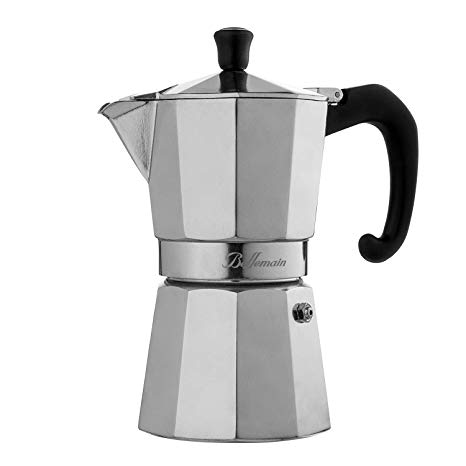
- Simple Stovetop Espresso Maker.jpg (13.38 KiB) Viewed 1125 times
These basic stove top espresso makers make one cup of really strong coffee by forcing water up from the bottom through the coffee to the container on top. The problem with these kind of makers is that the water is hotter than it needs to be for optimal extraction so the coffee often has a harsh taste. Still they are inexpensive, simple, and anything hot tastes good on a cold morning when camping.
Getting a little more sophisticated, I saw one of these that someone had on a very cold desert camping trip where everyone's water froze when it got down to 9 degrees one morning when we were staying on a dry lake bed

-
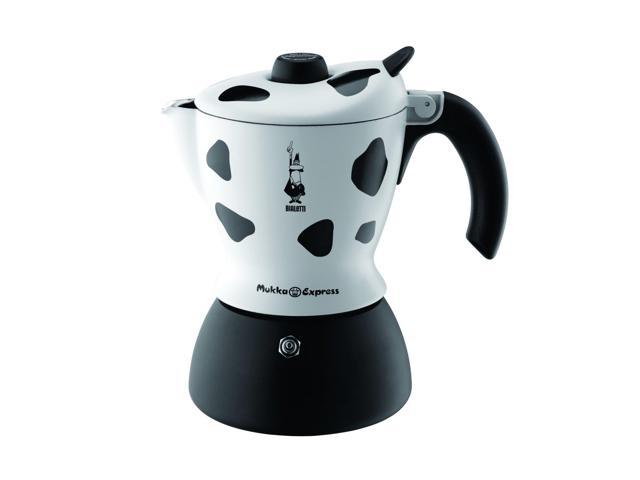
- Mukka Express.jpg (13.83 KiB) Viewed 1125 times
This is very similar to the stove top espresso maker above but this one is designed to put milk in the top section which is steamed as the coffee is forced up from the bottom making a fairly decent cappuccino or latte depending on how much milk you use.
I used both of these makers for many years and still keep them as part of my camping kit. As my taste for coffee became more refined and I started frequenting mom and pop coffee houses, I began looking for something that would make an even better cup of coffee. The makers above are not true espresso makers. A true espresso maker forces water at about 190 to 200 degrees through the coffee under pressure from a pump. The makers above use steam to force almost boiling water through the coffee. The traditional espresso makers use a hand pump which allows the barista to control the time and pressure of the draw. Traditional manual pump style espresso makers are generally very expensive costing $800 and up.
A few years ago at the Overland Expo I saw one of these espresso makers in one of the booths -
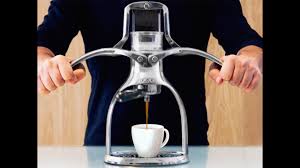
- ROK Espresso Maker in Use.jpg (6.99 KiB) Viewed 1124 times
I wanted to find out more but it was early in the morning and no one was around so I took some pictures and searched for one on the Internet after I got home.
It's a compact version of a traditional espresso machine. The ground espresso coffee is packed into a "portafilter" that attaches below the pump cylinder. To use this machine you push the levers all the down and fill the container at the top with water at the correct 190 to 200 degree temperature. Slowly lift of on the levers and a one way valve will allow the water to flow into the pump chamber. Once the levers are all the way up and the pump chamber is full you push down on the levers slightly to wet the coffee grounds (actually more like coffee dust for espresso). After a second or so you push down on both levers evenly to force the hot water through the coffee to produce a shot or real espresso which can be as good as anything found at your neighborhood boutique coffee shop and certainly better than what's found at the more ubiquitous chain on almost every city street corner. The advantage here is that you can make an excellent espresso even when camping in the wilderness.
The drawback to this type of maker is that it is somewhat expensive at about $150 and it requires a fair amount of other paraphernalia to make the best coffee. This is assuming you're not grinding fresh coffee every morning as well. Sometimes you do need to make compromises. We're camping after all

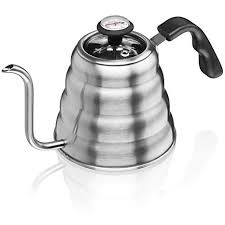
- Kettle with Thermometer.jpg (5.49 KiB) Viewed 1122 times
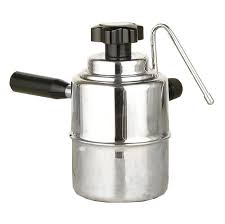
- Stovetop Milk Steamer.jpg (4.54 KiB) Viewed 1122 times
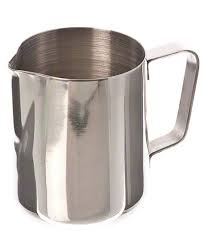
- Milk Frothing Pitcher.jpg (4.75 KiB) Viewed 1122 times
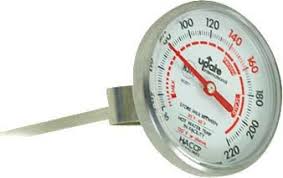
- Espresso Thermometer.jpg (6.4 KiB) Viewed 1122 times
Actually I do have a hand crank coffee grinder but it's very slow and I find that when I'm camping with a group I'm usually acting as the camp barista. It's too slow to keep up hand grinding all the coffee. So far, I haven't found a proper burr type grinder that runs on 12v. Maybe Makita will come out with an 18v coffee grinder someday to go with their 18v coffee maker -
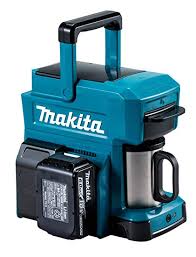
- Makita Coffee Maker.jpg (8.43 KiB) Viewed 1122 times